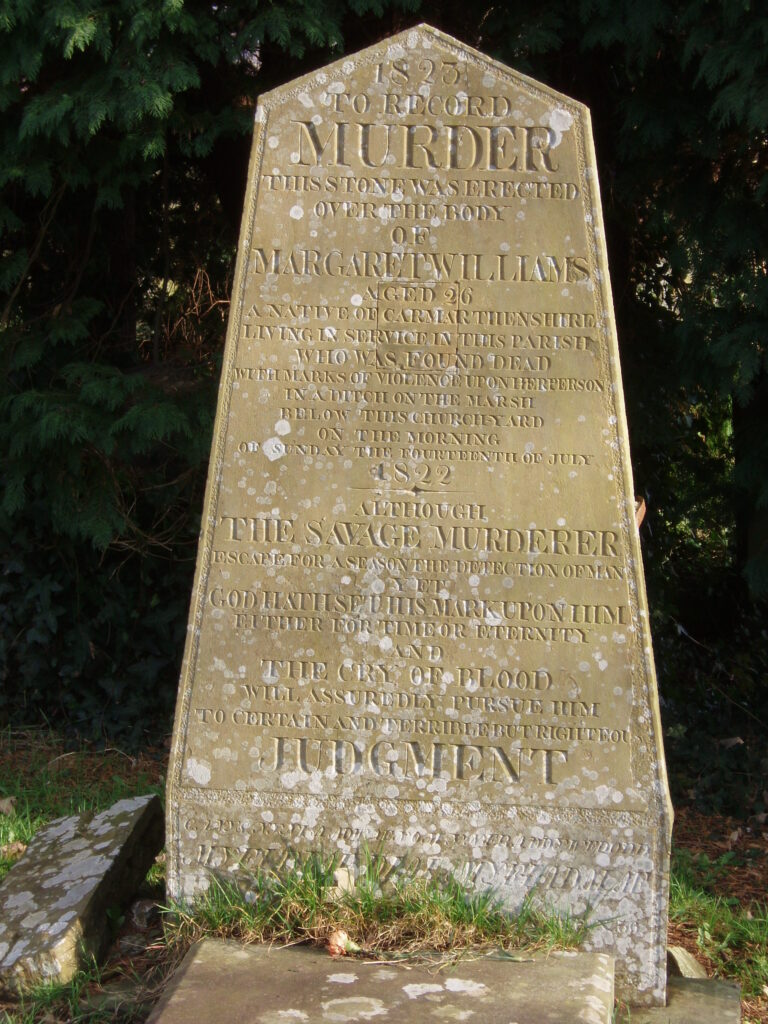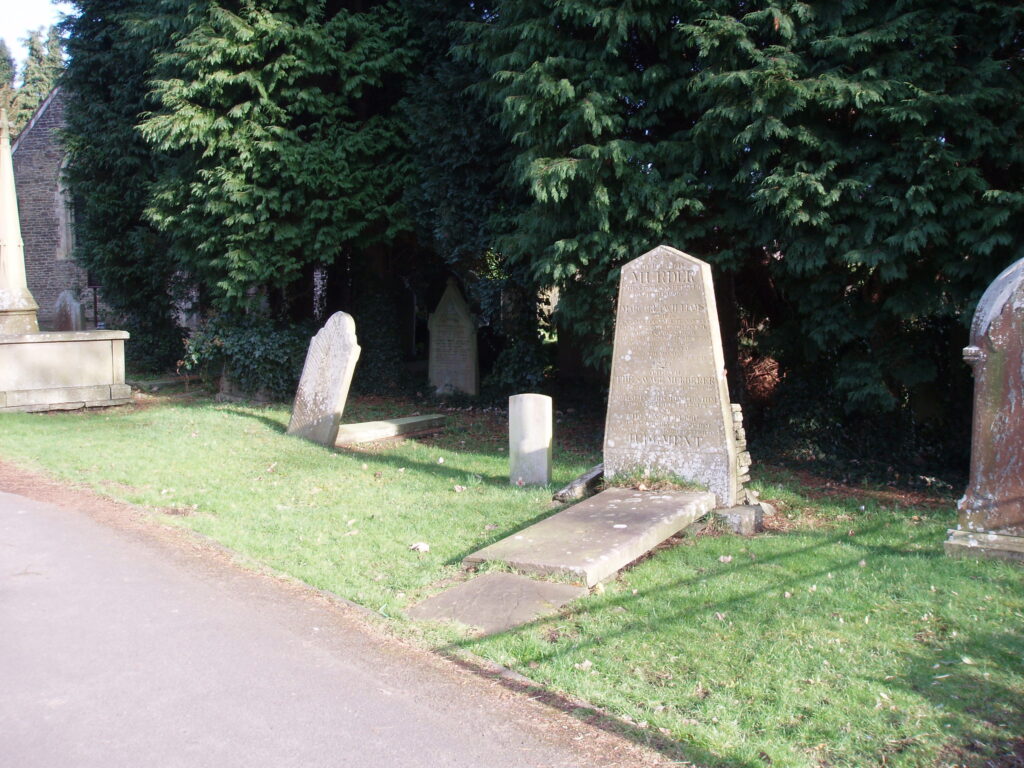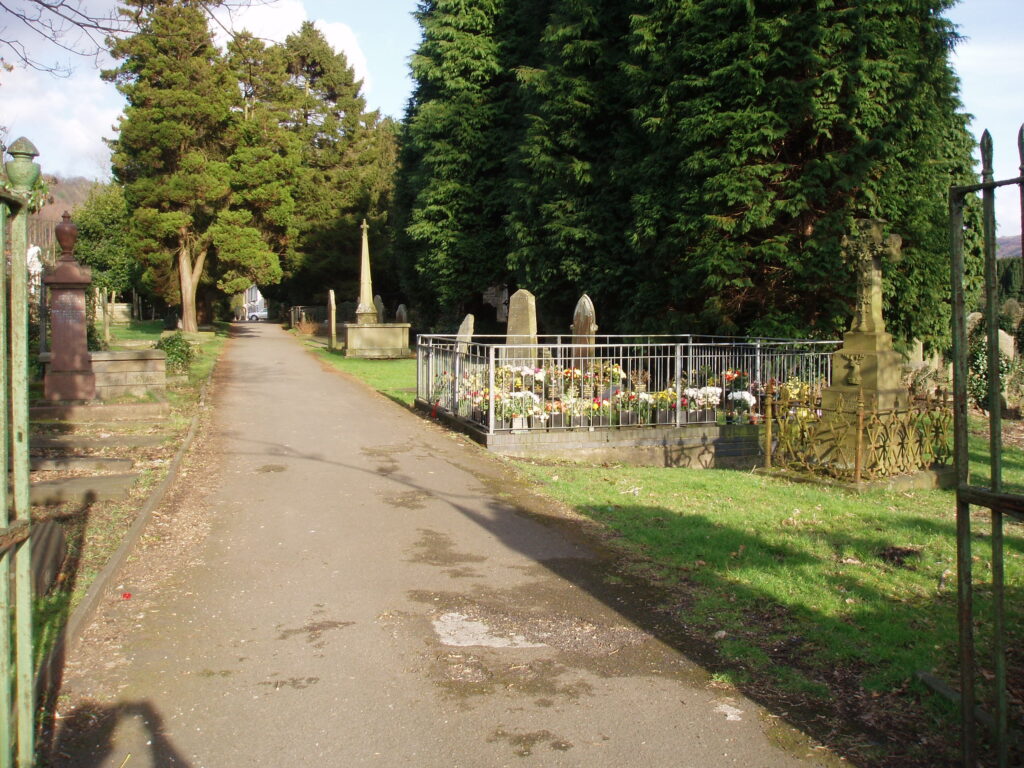
The Murder Stone is a remarkable thing for a number of reasons. But for me, the most striking thing about it are the words – and the depth of the emotion they represent.
It is the anger of it that grabs your attention. It speaks of “murder”, “violence”, “savage” “outcry”, “blood” and “judgement”. The words on the stone are the words of Elijah Waring, a local Quaker and well-known orator, who commissioned the stone to express the outrage of the community at the murder of Margaret Williams and their belief in a retribution from which there could never be any escape. The Murderer is truly a man without hope or salvation for “God hath set his mark upon him.” It also reflects too, the belief – or indeed the hope – that the murderer won’t escape.
It stands out because it is not square to the path. It is at an angle to the others around, positioned to face where everyone was convinced the murderer lived. The stone stretches out an accusing finger with absolute conviction, silently pointing, inflexible, immovable. It was on the main path through the village for all to see. The house at which it is aimed has long since gone, but this permanent accusation has never gone away.

When you see it you want to find out more – what is this remarkable gravestone about? Why was Margaret Williams murdered?
It can be no surprise, of course, that she was pregnant. It had become the great female sin, especially in towns, though clearly things have always been a little more relaxed in the countryside, where it was frequently important to establish fertility before any marriage. But pregnancy was a woman’s greatest risk, and her greatest crime. And yet you see in her story and the reaction to it, the essential contradiction of the Victorian Age in their anger that a woman, however fallen, should be murdered and their desire for justice. You can see, too, their differing perceptions about the roles of men and women.
Margaret was an unmarried country girl from Carmarthenshire. She came from Llangyndeyrn in the Gwendraeth Valley, near Kidwelly. Her father, John Williams was a labourer. She is described as a ‘fine, healthy young woman,’ known for her ‘industry and cheerfulness.’
Margaret was pregnant, probably at least 16 weeks. And Margaret was adamant about the father of her child. She had announced it confidently on a number of occasions…
Read the rest of the story in Grave Tales From Wales Volume Two (see below)

This story is the bonus story in my new book, Grave Tales From Wales Volume 2
The book contains thirty five other fascinating stories from the history of Wales Volume One has thirty stories. Some you might know, but others are forgotten surprises, from all parts of the country..
You can find out more about the books by looking in the menu or by clicking here
Of course you can go straight to the How to Buy page in the menu or, again. you can click here
Prices include packing and delivery. If the book is a gift, I will wrap it and send it directly to the happy recipient for no extra charge. Just ask.